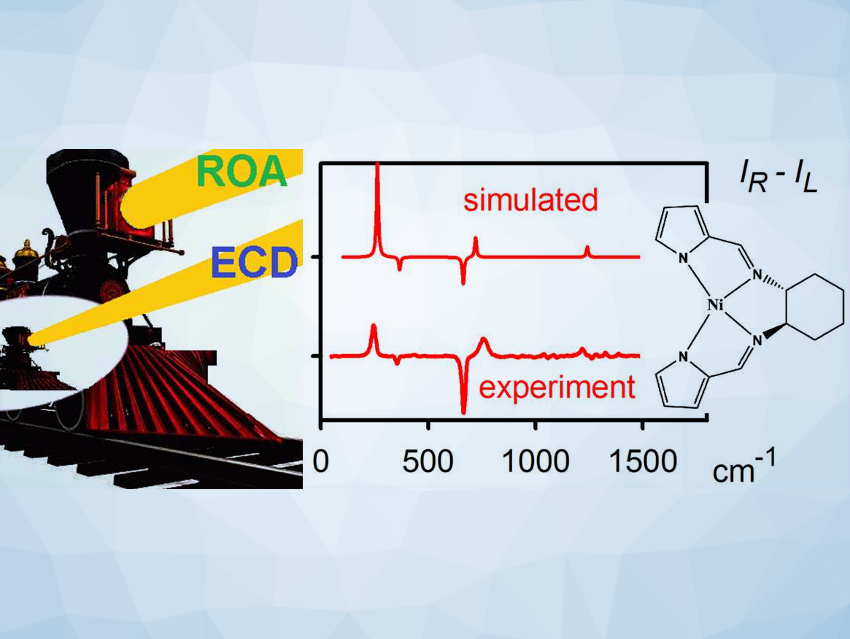Vibrational Raman optical activity (ROA), a modern variant of chiral spectroscopy, is particularly useful for biomolecular studies. Researchers have noticed that some chiral molecules can induce an ROA signal in achiral solvents. Surprisingly, the effect of this “transferred” chirality is often bigger than that of the molecule itself.
Yunjie Xu, University of Alberta, Edmonton, Canada, Josef Kapitán, Palacký University, Olomouc, Czech Republic, Petr Bouř, Academy of Sciences, Prague, Czech Republic, and colleagues have performed an analysis based on light-scattering theory and dedicated experiments to provide a more complete understanding of this chirality transfer. The results indicate that an interference of electronic circular dichroism (ECD) with the polarized Raman scattering is responsible for the effect. To confirm this interference of ECD and ROA, the team analyzed ROA spectra for model chiral nickel and copper complexes in a chloroform solvent. The chiral complexes induced the expected ROA effect in the solvent.
The effect seems to be fairly general for achiral organic solvents and solutes such as chiral transition-metal complexes of nickel or copper. It remains to be seen how this new phenomenon, the interference of circular dichroism and ROA, can be used practically. The researchers are confident that, as the effect is strong, it will boost the sensitivity of chiral spectroscopy and might have applications in imaging. It is also relevant for the construction of better ROA spectrometers that use ultraviolet light for excitation.
- Two Spectroscopies in One: Interference of Circular Dichroism and Raman Optical Activity,
Tao Wu, Guojie Li, Josef Kapitan, Jiri Kessler, Yunjie Xu, Petr Bour,
Angew. Chem. Int. Ed. 2020.
https://doi.org/10.1002/anie.202011146




